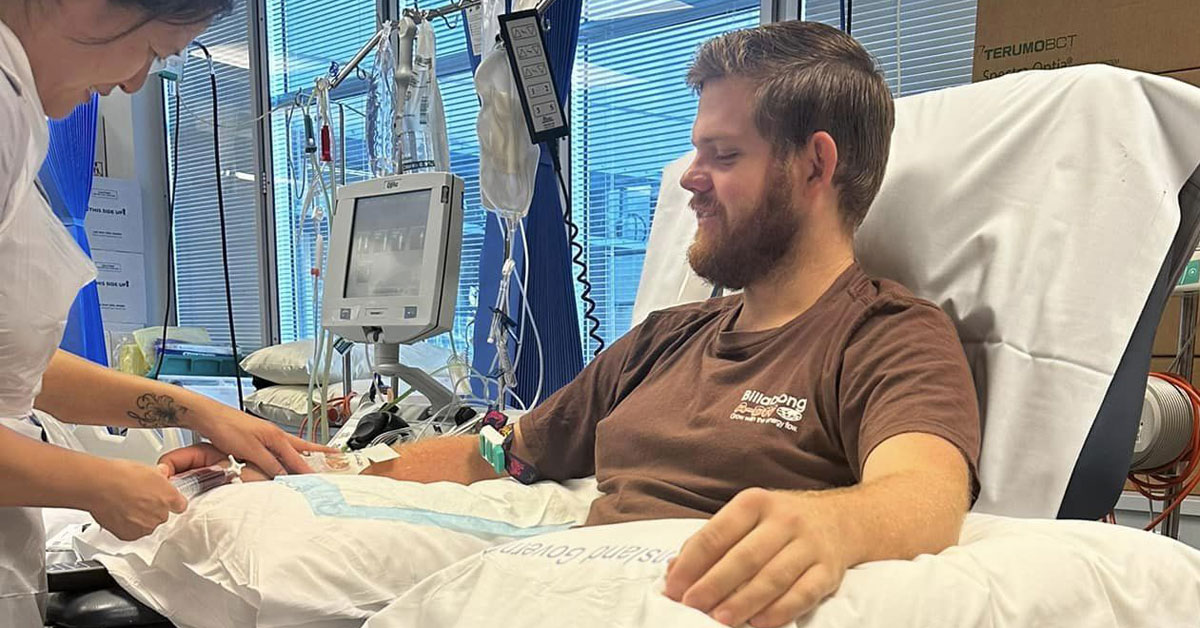

Stem Cell Donors Australia was formerly known as Strength to Give and ABMDR. Learn more.

When we talk about donating stem cells, we mean blood-forming cells that live deep inside your bones, in your bone marrow. These stem cells are what a patient needs to rebuild their immune system after theirs has been damaged, often by blood cancer or a rare disease.
There are two ways to collect these cells: through PBSC (peripheral blood stem cell) donation, or less commonly, through a bone marrow donation. Both methods save lives, and both come with a few things it’s worth knowing about.
Over 90% of donors give through PBSC donation, which doesn’t involve surgery or going under anaesthetic.
Here’s how it works:
In fewer than 10% of cases, donors are asked to give stem cells via a bone marrow donation. This happens when a transplant doctor decides that bone marrow, not PBSC, is the best match for their patient, which is often the case for young children or people with specific conditions.
Here’s what to expect:
With PBSC donation, the most common side effects are caused by the medication you’re given beforehand. This can include:
These side effects usually build gradually over a few days and disappear within 48 hours of donation. They’re a sign that your body is doing what it’s meant to do: making lots of extra stem cells.
On the day of donation, you might feel cold or tingly while connected to the machine, but most donors say it’s manageable, and many are surprised by how simple it is.
With bone marrow donation, the side effects are more physical. You might feel like you’ve had a hard fall, with bruising and soreness in your lower back. It can be uncomfortable, but pain relief helps, and you’ll have a full care team supporting you throughout.
Every medical procedure comes with some risks, and donation is no different, but serious complications are extremely rare.
For PBSC donors, the main risk is how your body reacts to G-CSF. A small number of people experience more intense side effects, but almost all recover quickly and fully. Your health is closely monitored throughout.
For bone marrow donors, the risks are mainly tied to the general anaesthetic (as with any surgery), and some people might experience bleeding or infection where the needle went in. Again, these are rare, and your safety is always the priority.
Importantly, neither method uses up your stem cells permanently: your body replaces them within weeks.
The short answer? Yes. Every donor experience is different, but one thing is remarkably consistent: donors nearly always say they’d do it again.
There’s a moment for every donor when it hits: you might be the only person in the world who can help a particular patient. You’re not just donating cells, you’re giving someone a second chance at life.
Yes, there may be side effects. There are some risks. But most donors say that the meaning behind it, the idea that you’ve helped someone see their next birthday, meet their baby, or simply keep going, is more powerful than any discomfort.
You don’t need to decide today. But if you’re reading this and thinking, I could do that, you already have what it takes.
Donating blood stem cells (or bone marrow, if needed) isn’t a walk in the park. But it is powerful, and it’s something most people never get the chance to do.
If that chance ever comes your way, you’ll be in good hands, and you won’t be doing it alone.